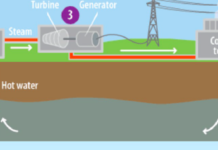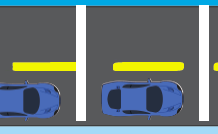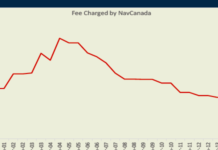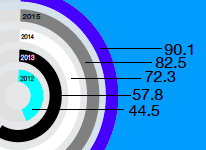by Saqera Jones, Denver School of Science and Technology (Denver, CO)
The disappearance of the Malaysian Airlines flight 370, which was scheduled to fly from Kuala Lumpur, Malaysia to Beijing, China on March 8, 2014, has raised a lot of questions about the credibility in tracking planes. Many people have complained that for a world with such vast systems of technology we should be able to track a missing plane; however it’s not that simple.

There are several factors that shape how easily a plane can be tracked. Altitude is a big factor. If a plane is flying too low, it can no longer be detected by the radars used to track plane activities. Radar is a system that detects the presence, direction, distance and speed of aircrafts by sending out pulses of high frequency electromagnetic waves that are reflected back to the source.
There are actually two types of radar systems: primary and secondary radar. According to the March 19, 2014, article in salon.com, the primary radar figures out the precise location of the plane by sending radio signals that bounce of the plane and are sent back to air traffic controls. The secondary radar is more precise and communicates with aircraft itself. The system, Aircraft Communications, Addressing and Reporting System (ACARS), is used for the exchange of information between aircrafts and the ground communications, according to Skybrary. This system has been used for about 50 years, and as the years pass the technology gets more and more effective through its advanced computer technology that aid in this process.
Another form of tracking is satellite tracking in which the position of flight progress is monitored through radio communication. It was recently revealed that the Malaysian aircraft didn’t have sophisticated enough satellite tracking, which is a potential answer to why the plane was able to completely disappear from the grid.
If a plane is flying too low, it can’t be tracked. Because the signals aren’table to bounce back off the plane in order to be transmitted due to a possible interference in the air, the signals aren’t processed. If the signals aren’t processed than the aircrafts position, direction and speed are no longer detectable by air traffic controllers. To eliminate these possible errors, air traffic controllers also rely heavily on the use of computers to track planes.
According to news reports, the primary radar tracking the aircraft detected, the Malaysian plane descending to about 12,000 feet right before its disappearance, and from this point forward all communication with the plane was lost.
Computers are the main forces behind tracking a planes journey. Various computer softwares are used to monitor and record this information. According to computer software developer Nmuta Jones of Edgelink, a computer software developing company with headquarters in Denver, CO, says he recalls various softwares that manage worldwide itineraries. However, there is no worldwide tracking system that tracks planes.. According to research on the varying systems of aircraft tracking, each airline and each aircraft corporation have their own different softwares to track planes.
Another way to monitor the activity of a plane can be the use of black boxes. Black boxes are on every single aircraft to record the activities on that plane. A black box is a device that is supposedly indestructible. The idea is that this device can record most plane activity. This works by submitting “pings” to the air traffic controllers, which indicate the flights position and status. Similar to radar, the pings are reflected from the black box and sent back to the air traffic control. This is supposed to help in situations with terrorist so that the flights activity is continually being recorded, says Jones. This allows the air traffic controllers to be in constant communication and status updates with the pilot and the plane.
The position of flight 370—the Malaysian aircraft—is still unknown and unfortunately it may be too late to track the position of this plane. Additionally, the battery has run out on the black box so these pings are no longer sent regardless. Tracking an airplane is harder than it appears.
Saqera Jones

This work is licensed under a Creative Commons Attribution-NonCommercial-NoDerivs 3.0 Unported License














So why has this technology not been updated? Surely the aviation industry has realized that there needs to be better ways of tracking aircraft.